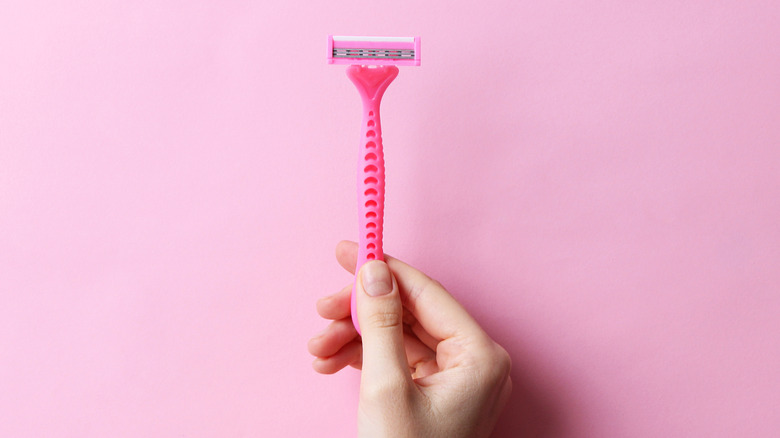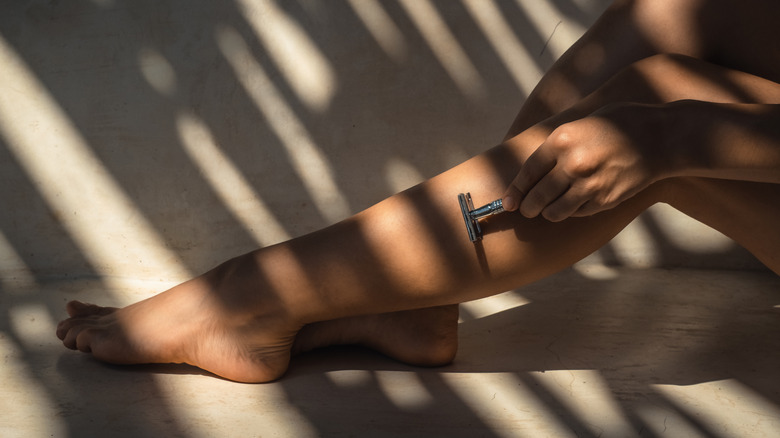Here's Why You Should Make The Switch From Disposable Razors
If you were on the internet in 2015, you probably remember the disturbing viral video of researchers pulling a plastic straw out of the nose of a Kemp's Ridley sea turtle. The video sparked an outcry against single-use plastics, and many companies, including Starbucks, announced plastic straw bans in response (via Time).
After the viral video of the distressed turtle hit YouTube, many animal lovers across the world bought reusable straws made of recyclable and compostable materials like bamboo, steel, and glass. And while reducing the number of disposable straws that inevitably end up in landfills is a good thing, straws are only a tiny fraction of the estimated 146 million tons of waste that ends up in landfills each year, 18% of which is plastic (via the Environmental Protection Agency).
Plastic straws are not the only single-use plastics that cannot be recycled and end up in landfills — or in the ocean. Plastic shopping bags, cutlery, food packaging, water bottles, and razors are just a few examples of plastics that are often unrecyclable.
Razors alone are a significant source of plastic waste that goes directly to the landfill. The Environmental Protection Agency estimated in 1990 that an average of two billion disposable plastic razors are thrown away every year — and that number is only growing as more Americans are using disposable razors.
Making the switch to safety razors is better for the planet--and your wallet and skin, too
Long before disposable plastic razors were invented, people shaved with steel safety razors. Invented in the 1800s, safety razors are reusable metal razors that use one blade that you can change (and recycle) as needed (via The Healthy Maven). This cuts waste generated from shaving down to zero.
But safety razors aren't just better for the planet: they might be better for your skin. According to NYC-based dermatologist Dr. Jeremy Fenton of Schweiger Dermatology Group NYC, the single blades found in safety razors are better for people with sensitive skin (via HuffPost). "If you have sensitive skin, fewer blades will be more gentle on your skin. More blades just means that there are more razors scraping across the skin, more risk of irritation and more stripping of oils," Dr. Fenton told HuffPost.
Additionally, safety razors are much more affordable in the long term. Though the upfront cost of a razor is more than you're probably pay for a pack of disposable razors, the cost of replacement blades is only about 30 cents each, compared to $2-5 dollars per replacement blade for disposable razors (via Baby Butt Smooth Shave Company).

